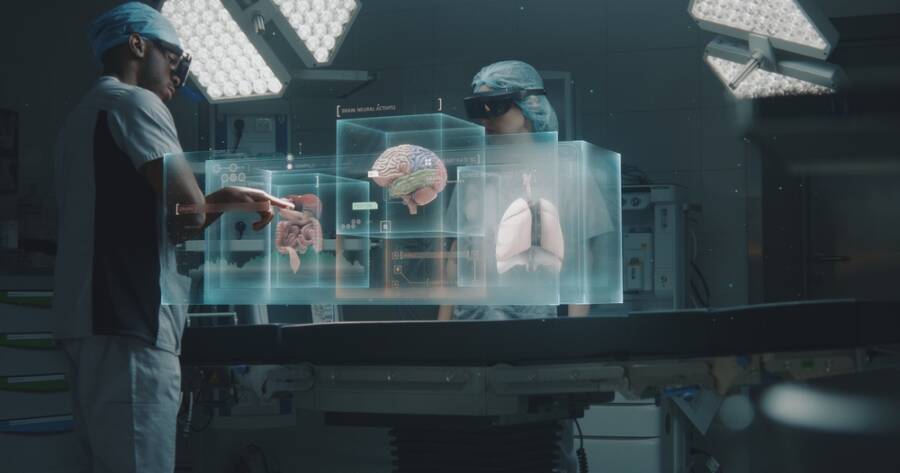Holographic display solutions offer innovative ways to enhance user engagement in various fields. Their applications in marketing, education, and healthcare demonstrate the technology’s potential to create immersive experiences and improve visualization.
What Are Holographic Display Solutions?
Holographic display solutions represent a cutting-edge technology that creates three-dimensional images through the interference of light beams from a laser or other coherent light source. Unlike traditional displays that present flat images, holographic displays provide depth perception, allowing viewers to see images from different angles as they move. This technology relies on the principles of holography, which captures and reconstructs light fields, resulting in a more immersive visual experience.1 Recent advancements in this field have led to the development of various types of holographic displays, including holographic projectors and augmented reality systems, which are increasingly being integrated into various industries. The applications of holographic display solutions are vast and varied, ranging from entertainment to education and healthcare. In the entertainment industry, holographic displays are used in concerts and events to create stunning visual effects that captivate audiences. In education, these displays facilitate interactive learning experiences, allowing students to engage with complex subjects in a more tangible way. The technology is also being explored for use in advertising, where it can create eye-catching displays that draw in consumers. As research continues, the potential for holographic displays to revolutionize how information is presented and consumed becomes increasingly apparent. Recent studies have highlighted the growing interest in holographic technology, with significant investments being made in research and development. According to a report from the International Data Corporation, the market for holographic displays is expected to expand rapidly, driven by advancements in display technology and increasing demand for immersive experiences. This growth is indicative of the potential that holographic solutions hold for transforming various sectors, making them a focal point for future innovation.
Holographic Displays Boost Engagement in Marketing and Education
Holographic displays have emerged as powerful tools for enhancing engagement in marketing and advertising. By providing a visually striking and interactive experience, these displays capture the attention of potential customers in ways that traditional media cannot. Brands are increasingly utilizing holographic technology to create memorable advertising campaigns that resonate with audiences. For instance, holographic displays can showcase products in 3D, allowing consumers to visualize them from multiple angles, which can significantly influence purchasing decisions. This innovative approach not only enhances brand visibility but also fosters a deeper emotional connection with consumers. In the realm of education, holographic displays are revolutionizing the learning experience by making complex concepts more accessible and engaging. Educators are leveraging this technology to create immersive environments where students can interact with 3D models and simulations. For example, in subjects like biology or engineering, students can explore intricate structures and processes in a way that traditional textbooks cannot provide. Research has shown that immersive learning experiences can lead to improved retention and understanding of material, making holographic displays a valuable asset in educational settings. The integration of holographic displays in both marketing and education is supported by recent findings that emphasize the importance of engagement in these fields. A study published in the Journal of Advertising Research indicates that interactive and visually appealing advertisements lead to higher levels of consumer engagement and brand recall. Similarly, educational research has demonstrated that students who participate in interactive learning experiences show greater motivation and enthusiasm for their studies. As the technology continues to evolve, the potential for holographic displays to enhance engagement in various sectors remains promising.
Transforming Healthcare with Advanced Holographic Visualization
Holographic visualization is making significant strides in the healthcare sector, offering advanced solutions for medical professionals. This technology allows for the creation of detailed 3D representations of anatomical structures, which can be invaluable during surgical procedures.2 Surgeons can visualize complex organs and tissues in real-time, enhancing their understanding of the surgical site and improving precision. Recent advancements in holographic imaging have led to its application in preoperative planning, where surgeons can rehearse procedures using holographic models, ultimately leading to better patient outcomes. Moreover, holographic displays are being utilized for medical education and training. Medical students and professionals can benefit from immersive simulations that replicate real-life scenarios, allowing them to practice skills in a safe environment. This hands-on approach to learning has been shown to enhance skill acquisition and confidence among trainees. Research published in the Journal of Medical Internet Research highlights the effectiveness of holographic technology in improving the educational experience for medical students, suggesting that it can lead to better preparedness for clinical practice. The ongoing development of holographic visualization in healthcare is supported by a growing body of evidence that underscores its potential benefits. A report from the World Health Organization emphasizes the importance of innovative technologies in improving healthcare delivery and outcomes. As holographic technology continues to advance, its integration into healthcare practices is expected to expand, paving the way for more effective and efficient medical care.
Learning More About Holographic Display Solutions
For those interested in exploring the fascinating world of holographic display solutions, numerous resources are available that delve deeper into the technology and its applications. Academic journals, industry reports, and reputable news sources provide valuable insights into the latest advancements and trends in holography. Engaging with these materials can enhance understanding of how holographic displays are transforming various sectors, from marketing and education to healthcare. As this technology continues to evolve, staying informed will be crucial for anyone looking to leverage its potential in their respective fields.
